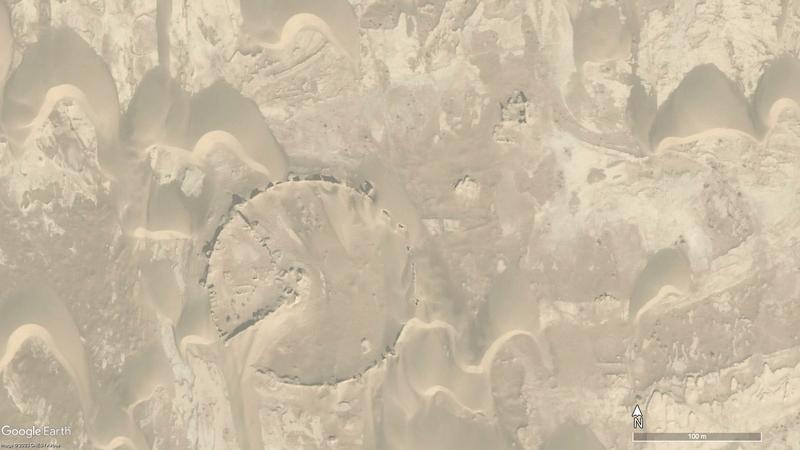Desertification, characterised by land degradation in arid, semi-arid, and dry sub-humid regions, results from a myriad of factors, including both human activities and climate change.
It involves the transformation of fertile land into a desert, primarily triggered by factors such as prolonged drought, deforestation, and inappropriate human activities in agriculture. The Middle East and North Africa (MENA) region is particularly susceptible to climate change, with desertification being a significant consequence. This process significantly exacerbates water scarcity, an existing challenge in the already water-stressed region.

Figure 1: An abandoned traditional settlement in the Sistan region of Iran near Zabol, attributed to prolonged drought and desertification. Image Google Earth 2016.
Desertification has repercussions on both tangible and intangible cultural heritage.
Its effects on archaeological sites encompass sites and structures lost to shifting sands and dune systems, compromised stratigraphic integrity due to crack/heave damage in drier soils, increased exposure resulting from vegetation loss and erosion, and increased vulnerability to fire and windstorm, among other factors.

Figure 2: Historic structures beneath sand dunes in the Girdi area of the Sistan region, Iran. Image Google Earth 2019.
Regarding its impact on intangible heritage, a notably significant outcome is the potential for displacement prompted by drought or desertification. When people are displaced and distanced from places of importance to them, compelling evidence indicates that their cultures often experience a reduction and, in many cases, are jeopardized. Throughout this process, traditional landscape knowledge, rituals, and ways of life may be lost or face the risk of extinction.

Figure 3: Historic structures at risk from encroaching sand dunes in Sar o Tar, Afghanistan. Image Google Earth 2013.